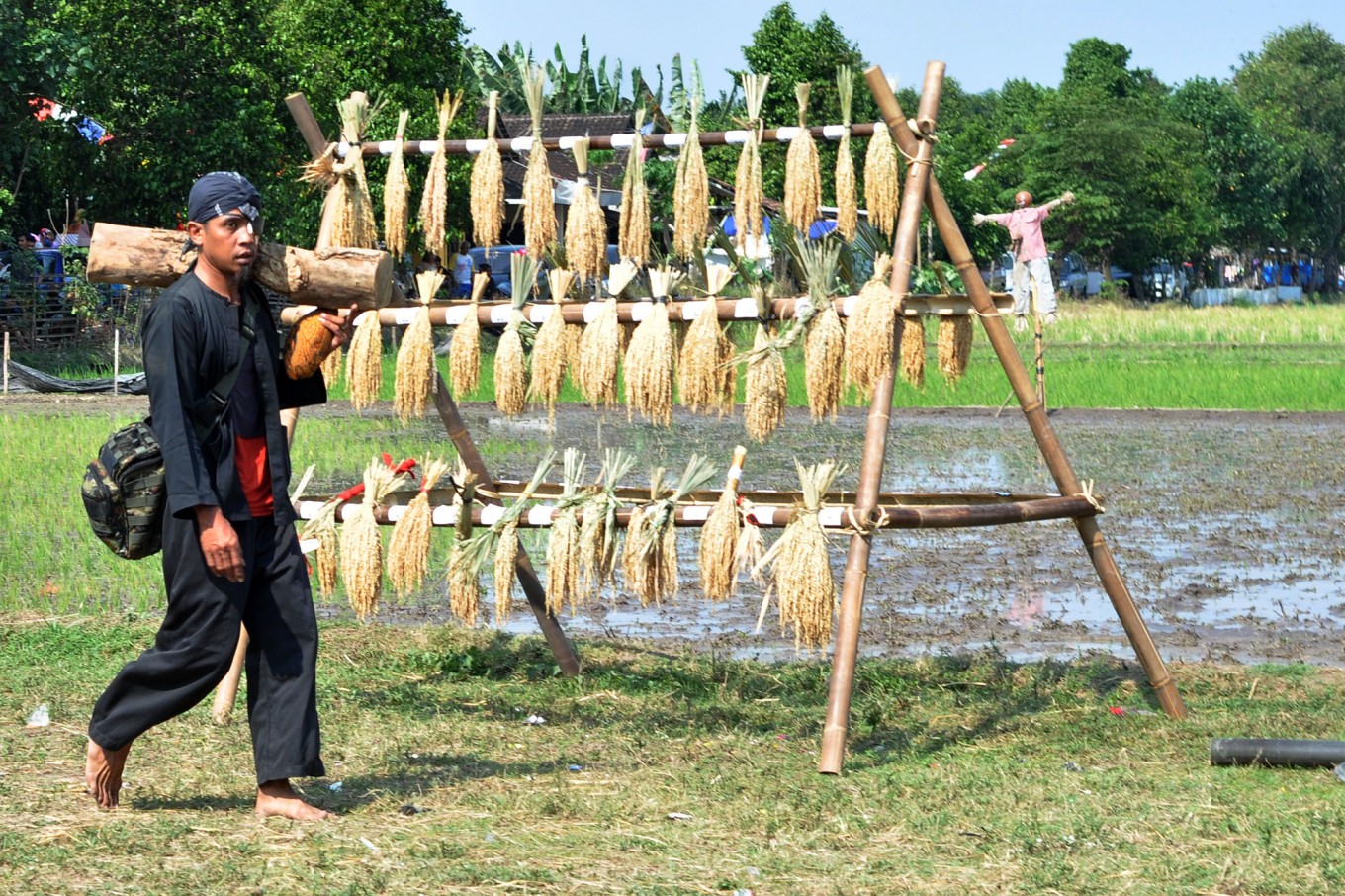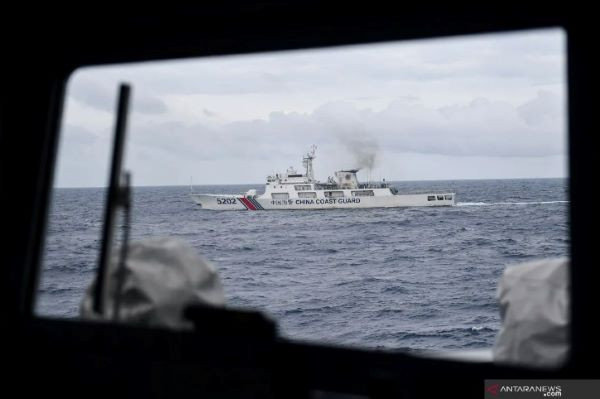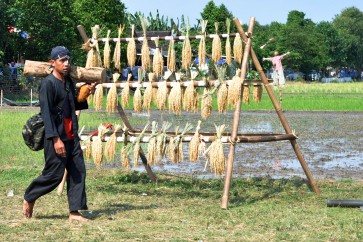Feeding the future
To feed the projected 9 billion people sharing the planet in 2050, food production must be increased by 60 percent of where we are at now, according to the Food and Agriculture Organization.
Change Size
 A man walks past the rice stems hung on bamboo poles. Delanggu is famous for its Rojo lele rice variety. (JP/Magnus Hendratmo)
A man walks past the rice stems hung on bamboo poles. Delanggu is famous for its Rojo lele rice variety. (JP/Magnus Hendratmo)
“Who will be the farmers?” President Joko “Jokowi” Widodo recently inquired about the lack of interest of young graduates of the Bogor Institute of Agriculture (IPB) in taking up farming, when addressing their anniversary event. With our 260 million people, surely food security, the goal of all Indonesian leaders past and present, would require improved agricultural productivity? However, does agricultural production depend solely on producing more farmers? I am afraid it does not.
The world is changing economically, demographically, health-wise and also climatewise. To feed the projected 9 billion people sharing the planet in 2050, food production must be increased by 60 percent of where we are at now, according to the Food and Agriculture Organization.
However, the World Food Program reported in 2014 that 9.5 million children in Indonesia under 5 years old are malnourished. Overweight and obese adults have almost doubled in numbers in the last decade, resulting in a startling increase in non-communicable diseases.
Ironically, while 20 million Indonesians go to sleep hungry every day, 300 kilograms of food per capita is wasted each year. Many regions already suffering from high rates of hunger and food insecurity are predicted to experience the greatest decline in food production caused by a rapidly changing climate.
Paradoxically, our ambition to achieve high food output has placed great strain on natural resources. The agriculture sector is a major source of greenhouse gas emissions, where 20-30 percent of the total comes from the agriculture, forestry and associated land-use sectors.
So how can we ensure food security and sufficient nutrition without compromising the social, economic and environmental conditions for future generations?
Innovation can break the systemic issue that is creating a vicious cycle: some of the problems in our current agriculture practices are intensifying climate change, while climate change affects food production.
















